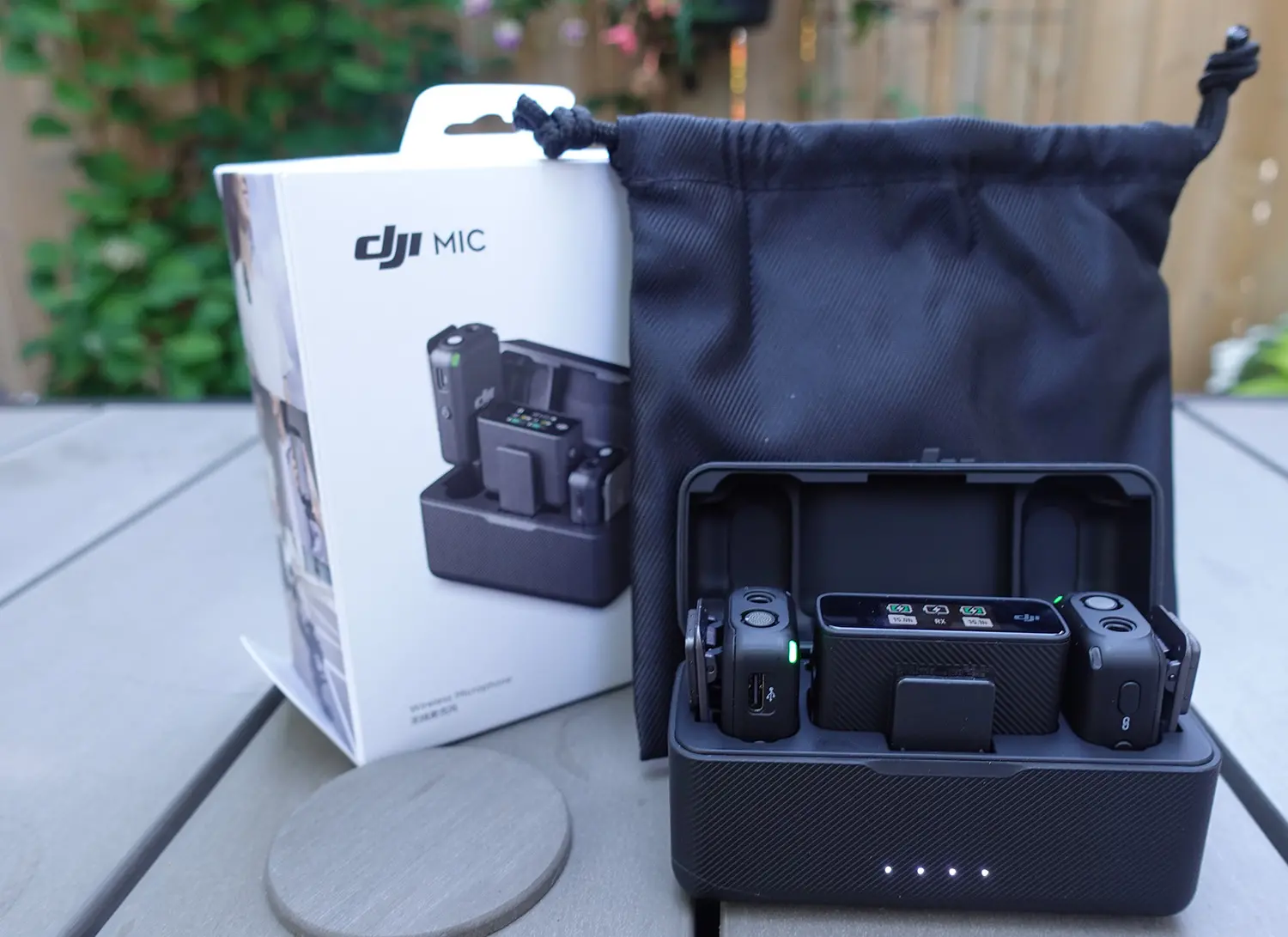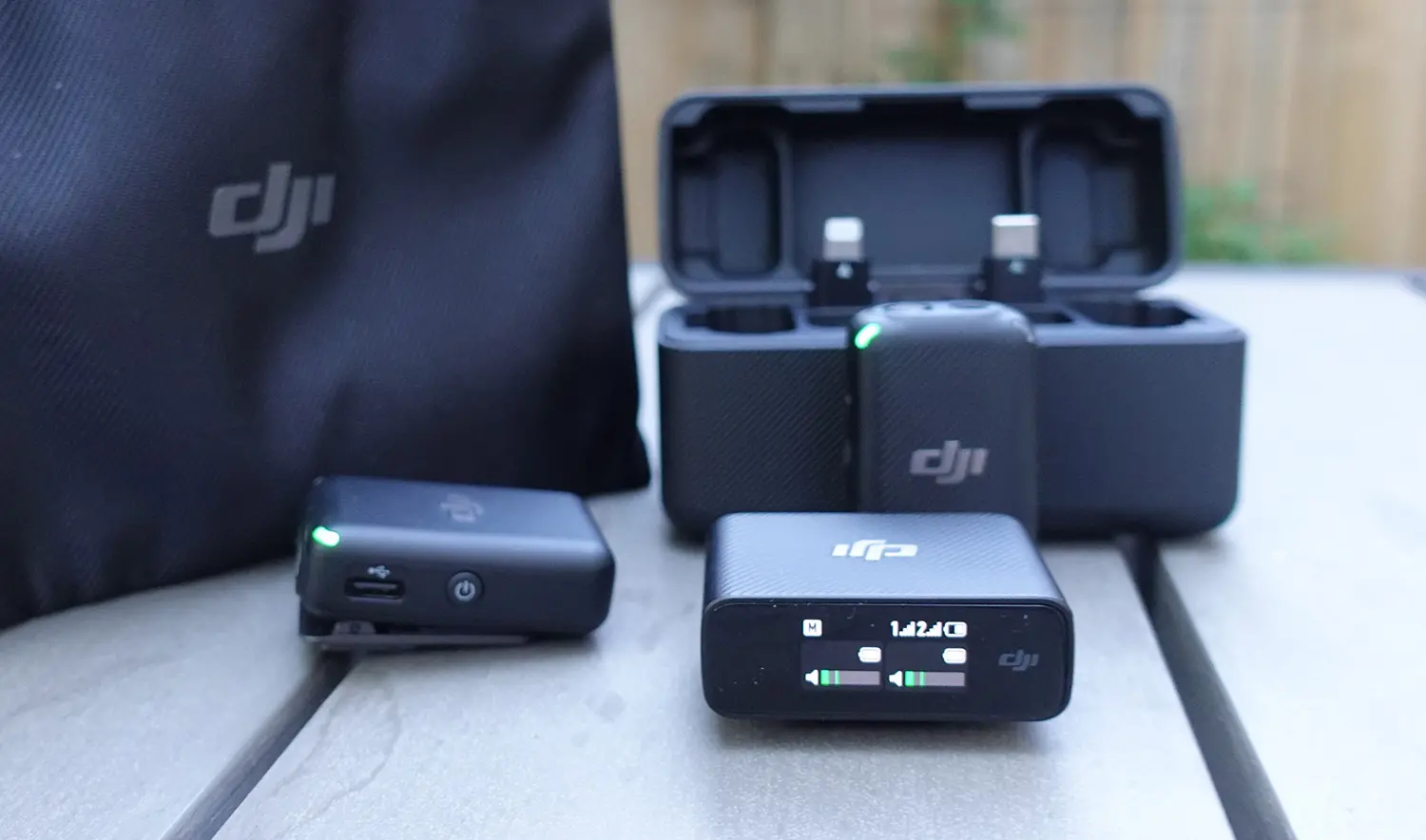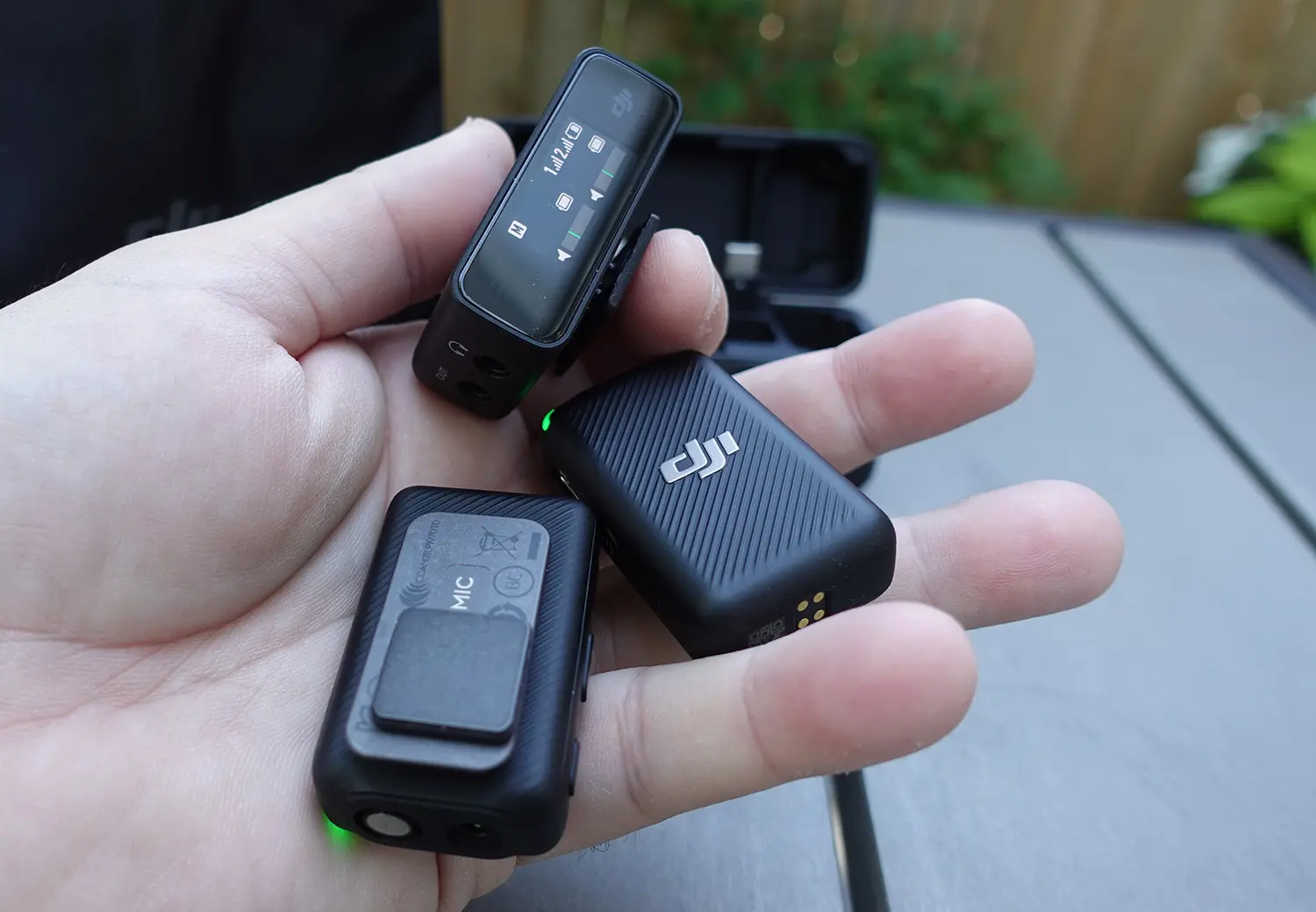
For any fans of drones and aerial photography the name DJI is sometimes spoken in hushed, reverant tones. They’ve managed over the last couple decades to produce cost-effective yet immensely robust solutions that have shaken up the industry, with consumer level devices that often rival the much, much more expensive “professional” options.
The same philosophy carries over to an offshoot into the world of recording audio, with the DJI Mic wireless microphone set that promises the same level of quality and ease-of-use that upends what the competition has managed to provide. Does the DJI Mic system live up to the hype? Find out in this review.
Specifications of the DJI Mic wireless system
Transmitter
- Weight: 30g
- Battery: 5.5 hours (70min charging time)
- On-device record button
- Frequency response: 50hz-20kHz (Low-cut 150Hz-20kHz)
- Built-in omni-directional mic
- Lav-mic input
- Internal storage for 8hr of recording
- Max distance to transmit: 250m
- Clip/magnetic attachment
- Windscreen
Receiver
- Weight: 24.9
- Hotshoe mount, USB-C, and Lightning adapter
- 3.5mm headphone jack for real-time monitoring
- 3.5mm line-level output
- OLED touch screen
- TRS & TRRS 3.5mm cables
Case
- Weight: 162.2g
- Battery: fully charges all three devices approximately twice (for ~15hrs total recording)
- Slots for two transmitters, one receiver, three adapters

Unboxing the DJI Mic microphone system
Inside the small cardboard box you find the charging cable, a pair of 3.5mm interconnect cables, some sparse documentation, a USB-C to USB-A charging cable, and a small cloth bag for storing accessories. While the DJI Mic is available as a single transmitter (TX) and receiver (RX) set, I cannot emphasize enough just how much the charging case improves this product. This is perhaps the biggest game changer on the market, as in this one case you have everything you need to do either solo or dual recording, with a robust built-in battery and a single cable required to recharge. As good as the mics are it’s the case that’s the true triumph here, and I wish it sold individually for those that buy the other, smaller kit, or that there was a similar case that came with that option.
Setting up the DJI Mic for recording
Once you’ve committed to the full, larger set you’re in for an absolute treat. Right out of the box everything just works. The slide-in adapters that attach to the bottom of the receiver work with either iOS lightning ports or the more ubiquitous USB-C, the latter allowing you to record to your Android phone, or even setup your PC/Mac to have wireless mic recording. Brilliant.
Firmware updates are quick and simple, with a downloaded .BIN file dropped on the device after you’ve hooked it up to your computer. An immediate benefit from the latest update is to be able to set the transmitters to begin recording to internal memory as soon as you pull them out, meaning you’ll never be stuck without a backup. There’s no need for pairing, the transmitters work immediately with the receiver, with easy-to-read VU meters bouncing horizontally to show your line level.
Simply plugging in the receiver into the compatible charging port turns your mobile device into a wireless recorder with professional specs. Similarly, hooking up to a camera is painless, provided your model includes a 3.5mm mini-jack input.
The sides of the TX transmitter and RX receiver units have USB-C ports for both firmware and charging purposes, but, of course, thanks to the case you’ll almost never need to plug these in with a cable directly save for the occasional update.
Recording with the DJI Mic wireless system
Within seconds of unboxing you’re able to setup a recording session without ever cracking open a menu. If you take the time there are a number of features on the RX unit you can dial in, from choosing between recording characteristics, how the TX units behave when removed from case, whether the LEDs light up, etc. You can record with a single TX unit and never even bother with the RX if that’s your style, merging the audio in post with whatever’s captured in-camera, but of course the huge advantage here is the robust receiver option. The two transmitters can work simultaneously, making a two person dialogue entirely painless. You can set it to merge the audio into one stereo recording, or to have each person on their own mono track, thus able to remix more easily in post. Again, a beautiful touch.
The internal mic is decent, and the included wind protector does an OK job of blocking out extraneous noise. Still, I choose to use a wired Lav mic when recording, as the timbre is preferred, and I’m still granted the benefit of the near preposterous 250m of distance I can accommodate between my camera position and where I’m speaking.
Thanks to the internal recording memory I’ve managed to rescue entire recording sessions—when self-producing it’s easy to get something a bit wrong, and at one point I hadn’t fully inserted the 3.5mm cable from the RX to the camera. I played back the video and found to my horror nothing but buzz (I had disabled the internal mic to the camera as part of another test). Thankfully, I had the backup audio from the DJI on the TX unit itself, so after some jiggling around to sync audio to picture without a slate (oops!), I managed to rescue the footage without having to rerecord.

What could be improved?
It’s hard to find fault with the DJI Mic, but if pressed I’d love it if the charging case was a bit more resistant to the elements, perhaps with a flap to cover the USB-C charger and a more robust seal on the case. The magnetic lid is fairly secure, but I’d trade that for a latch that meant that inside the case everything is protected from mild moisture. I’m paranoid about losing the USB adapter for the receiver, and would love it if they were inexpensive and easy to re-purchase. The case itself is larger than required for single-shooter use, so if they engineered something similar for only one transmitter that would be a boon. I’d love it if there was some sort of tracking functionality of finding a lost case, but that’s the result of leaving my personally purchased unit on the floor of a movie theatre and spending days visiting a bleak lost-and-found trying in vain to recover it.
Final thoughts
For everything else, the DJI Mic wireless system is a game changer, an absolute rock solid performer with pro-level audio in a beautifully engineered package. The receiver’s OLED screen is easy to read even at a distance, the continual update through firmware resulting in welcome new functionality. The audio is clear and clean, the internal mic great, the ability to use even better lavalier mics fantastic, the clip and magnetic attachment options solid… What’s left to say? This is the best of the lot, and unless you’re a studio production requiring many, many more devices to record audio, for just about anyone wishing to capture up to two individuals in a way that surpasses any other option the DJI Mic wireless microphone system is what you should be looking at.




